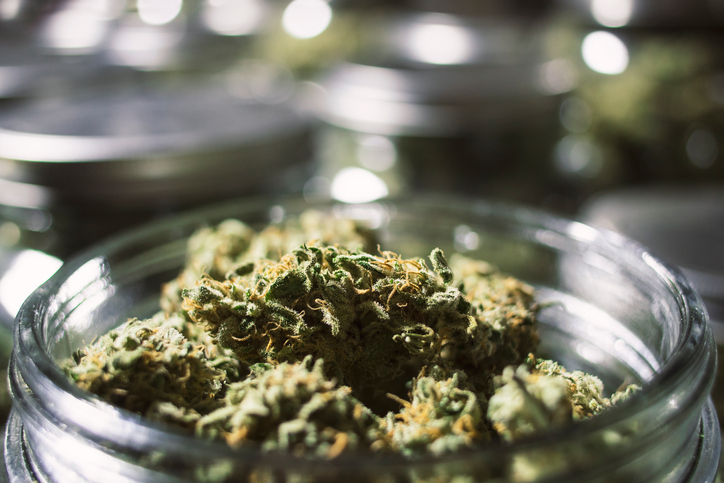Legal marijuana prices: What’s next?
Analysts say newcomers to the cannabis sector’s “green rush,” along with streamlined operations, are playing a role in lower wholesale and retail prices.
Following the historic elections of 2016, advocates of legal marijuana have been anticipating more milestones – both financial and political — for the cannabis business in 2017. But many are also looking at the industry’s bottom line with some concern, following the dramatic drop of wholesale prices for legal cannabis in some states.
According to a recently-released executive summary of the fifth annual “State of the Legal Marijuana Industry” by the Arcview Group, an investment network that works with its members on marijuana-based ventures, North American consumers spent $6.9 billion on legal cannabis products in 2016, up 34 percent from a year earlier.
The overall industry’s “blistering” compound annual growth rate (CAGR) of 40 percent between 2014 and 2016, Arcview notes, was driven primarily by the legalization of recreational (or “adult-use”) sales of marijuana in Colorado and Washington State.
But Arcview is also expecting that growth rate to scale down to around 19 percent in 2017, “as the eight states that voted to open or expand their cannabis markets on Election Day in November 2016 work to implement the new programs.”
And this new phase of the so-called “green rush” is also having its impact in more established cannabis markets. According to figures quoted by Marijuana Business Daily, wholesale prices of both recreational and medicinal cannabis dropped steeply in Colorado last year: with the average asking price for a pound of recreational marijuana falling by 38 percent in 2016 while the price for a pound of medicinal cannabis fell by 24 percent.
The report says those dramatically lower wholesale prices “are telling of the increasingly competitive nature in the cultivation segment of Colorado’s marijuana industry as new players rush in.”
Similar price drops have been seen in Washington State – where, after a brief price spike due to early supply shortages, both wholesale and retail cannabis prices tumbled within months of recreational legalization.
Established cannabis growers, meanwhile, are working hard to make their operations more cost-efficient as they struggle to remain competitive amid the growing supply of legal marijuana.
“Best practices are spreading,” Tom Adams, editor-in-chief of Arcview Market Research, told ATTN.com. “Growers are getting better at growing cannabis cheaply. Doing better indoors, doing better in greenhouses, doing better outdoors.”
There’s also the understanding in the industry that, as the legal cannabis movement gains momentum and spreads across the United States, a lot of the current growing practices – especially the prevalence of indoor “grows” – are no longer cost-effective, given their high overhead due to electrical and other costs.
“Growing inside is definitely an antiquated concept,” Leif Olsen, managing partner with Denver-based Good to Great Consulting, told Bloomberg Markets in January. “It’s coming out of hiding.”
And given the increasing focus on production costs, Olsen expects the overall cannabis industry will end up shifting to a much more efficient greenhouse model.
Let’s not forget that marijuana is an agricultural product; and that America has long been a world leader in the production of inexpensive, top-quality agricultural products. So while cannabis laws are relaxed and marijuana growers no longer have to worry about keeping their work concealed, the bigger and financially stronger marijuana cultivators are expected to ramp up their operations.
Analysts believe these large-scale commercial cannabis operations will also lead to more mainstream agricultural methods being used; a practice that will likely put more economic pressure on the smaller growers.
“Previously, turning a profit was almost a given, but not so much anymore,” Erik Romero, director of data and finance with Cannabase, a Colorado-headquartered online wholesale platform, told Marijuana Business Daily.
The Arcview reports says that, as marijuana prohibitions crumble, the legal cannabis industry should take its lessons from other business sectors that have had similar, spectacular growth in their early years. It points to cable television in the 1980s and broadband internet access in the 2000s – as well as the more recent successes and setbacks of Starbucks coffee, Whole Foods and some craft beers.
But cannabis industry insiders say the industry is still shaking itself out and warn that many marijuana growers will be shunted aside if they don’t adapt to a constantly-evolving financial landscape.
“It’s sad, but it’s Economics 101,” Sally Vander Veer, co-founder of the Medicine Man dispensary in Denver told Inc.com. “We’re not immune to the forces of supply and demand .You need to ride the wave of over-supply. It’s pivot, or die.”




